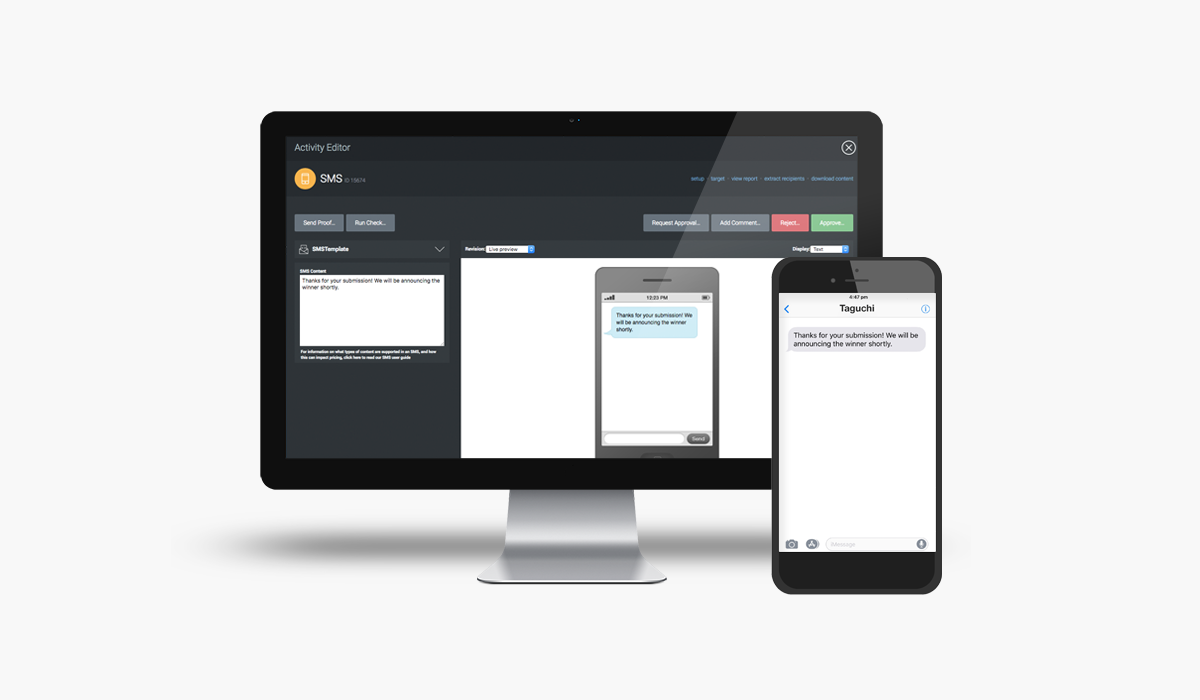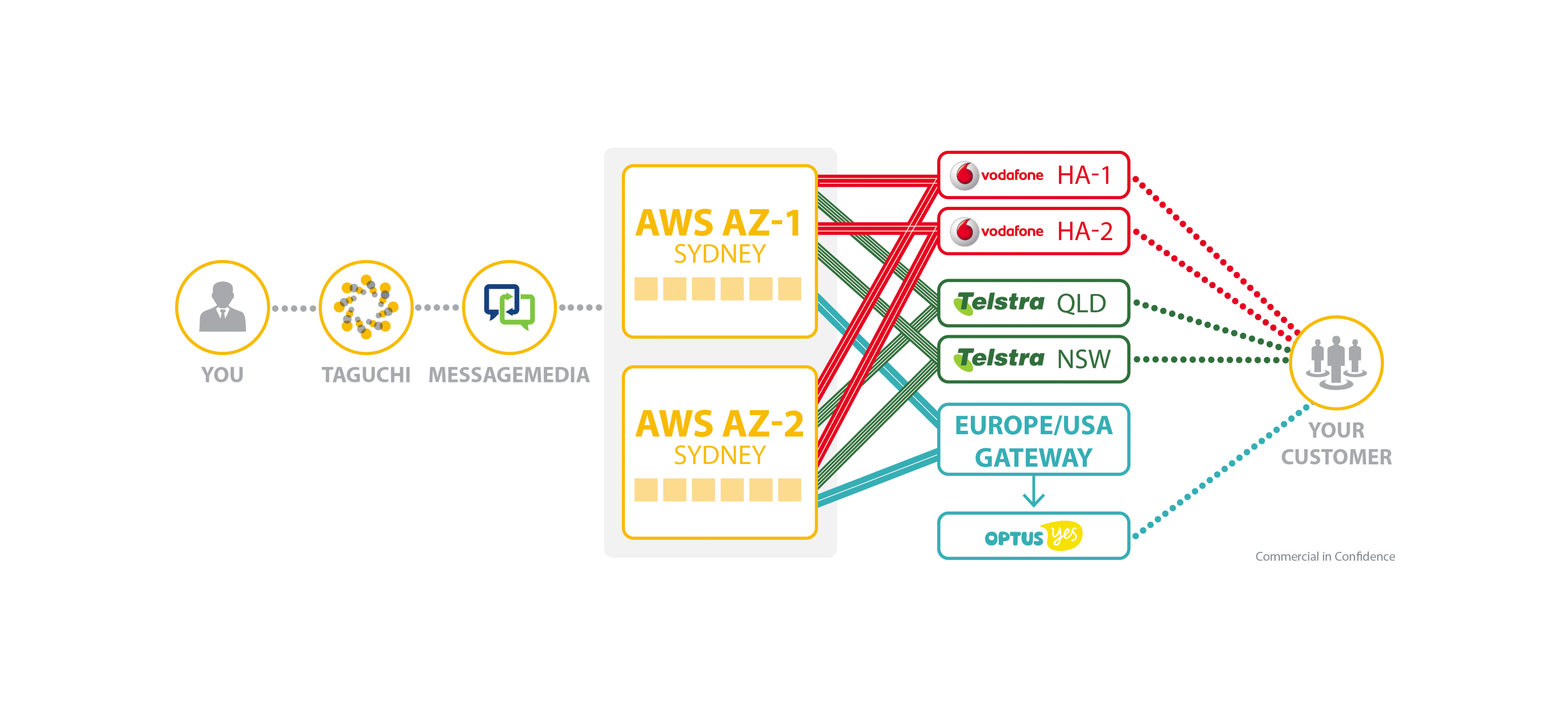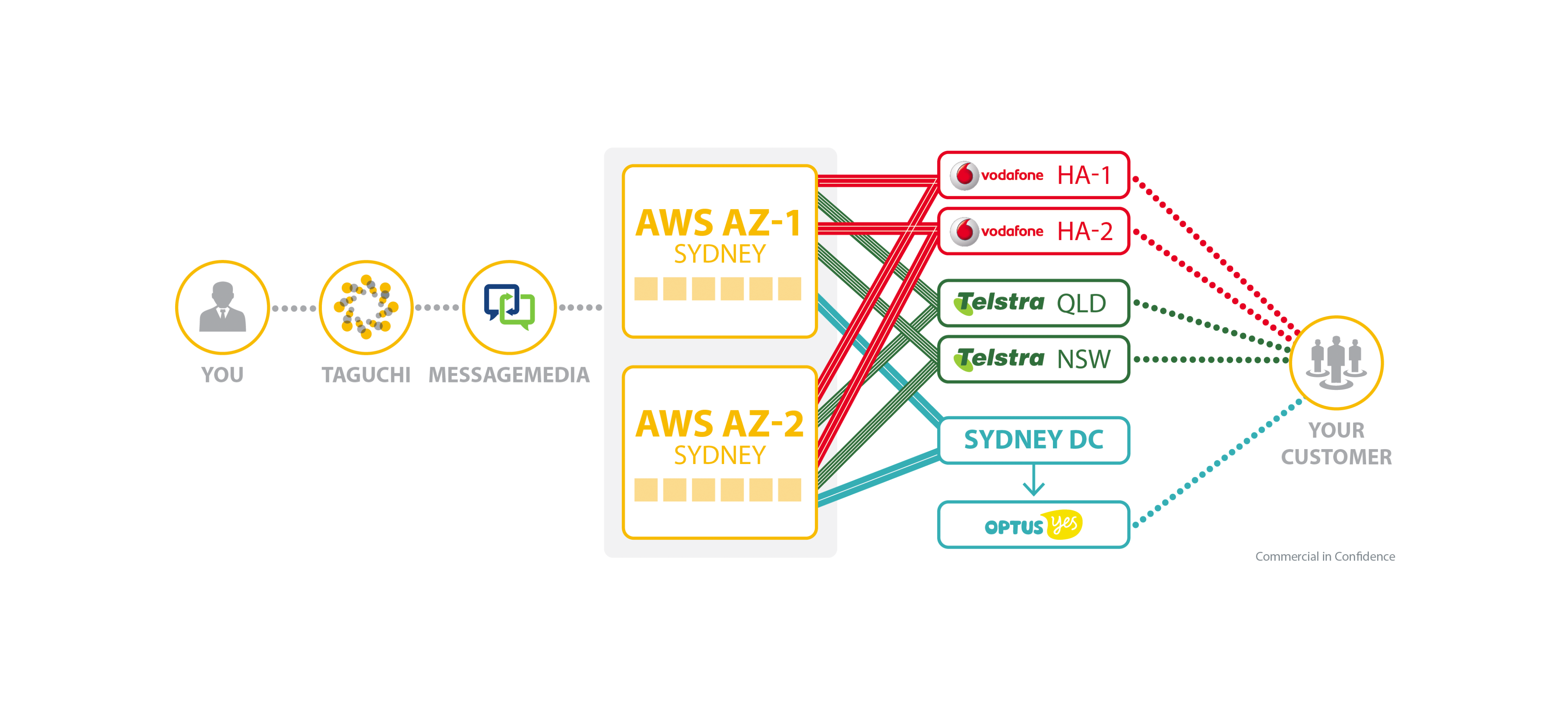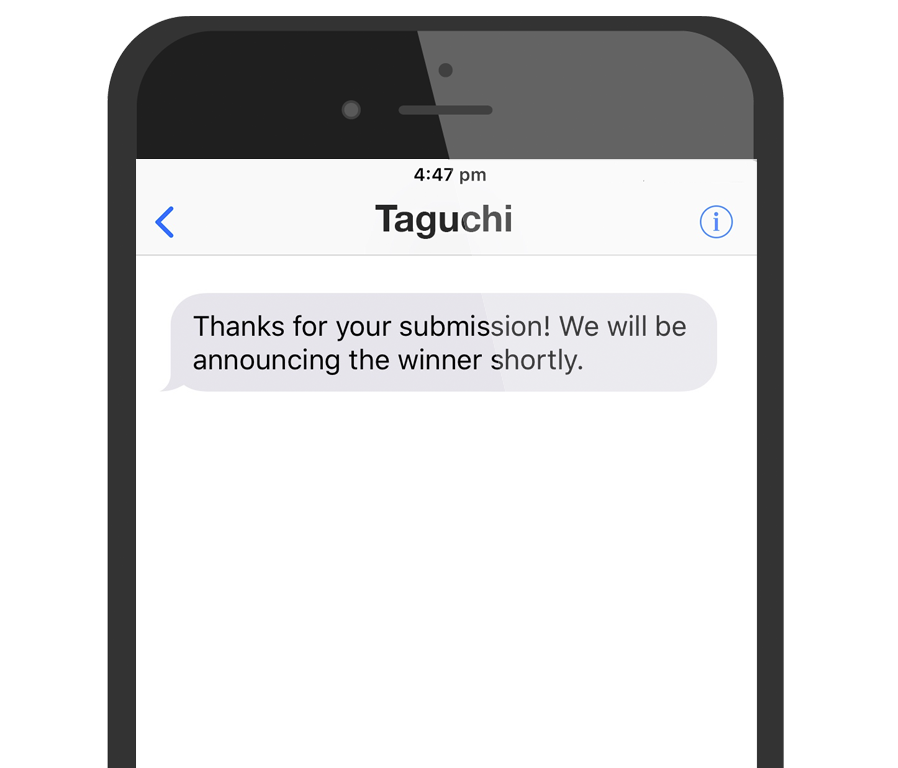Legal Compliance
Introduction
SMS communication is highly regulated and you must ensure that you comply with the Spam Act 2003 at all times. Fines for non-compliance can be very large so always ensure you meet all requirements.
For full details of your company’s obligations under the Spam Act 2003 please use the link below and refer to your legal advisors with any questions.
https://www.acma.gov.au/publications/2024-07/guide/consumer-consent-expectations-businesses-conducting-telemarketing-and-e-marketing
It is a contractual obligation of all Taguchi® users that they comply with the Spam Act 2003 or similar Australian Legislation.
Below are the most important rules you must abide by:
Recipients must be opted-in
The recipient of the SMS you’re sending to must have given you their consent to send them a commercial SMS. That is, the recipient must have ‘opted in’ to receive any SMS from you.
If a recipient complains about receiving an SMS from you, and you are subsequently questioned by an authority such as the ACMA (The Australian Communications and Media Authority), you must be able to show proof that you have the recipient’s consent to send them SMS messages.
Recipients must be able to easily opt-out
Every SMS you send must provide the recipient with the ability to unsubscribe or stop receiving future messages.
A notification in a text message to reply ‘stop’ to opt-out or ‘unsub’ must be included as part of the 160-character limit.
Include either of the following in an SMS sent from Taguchi® to inform the recipient about how to unsubscribe / opt-out of future SMS communications from you: “Reply ‘Stop’ to unsub” OR “Reply ‘Unsub’ to stop”.
If the recipient replies to the message they receive from you and includes either of the above messages, they will be flagged in the Taguchi® database as unsubscribed. This means they will receive no more SMS messages from your Taguchi® account.
Common Traps
Subscriber data (i.e. mobile numbers) — always be sure that the subscribers’ mobile phone numbers uploaded into Taguchi® are accurate.
Messages sent by Taguchi® to phone numbers that are invalid or inaccurate may:
Simply be ignored by the SMS gateway for that subscriber after Taguchi® has transmitted it to them.
Be accepted by the gateway as a valid format (even if it is incorrect), and the gateway will attempt delivery. Even though the delivery may ultimately fail, you will be charged for the attempted delivery to the gateway by Taguchi®. As the gateways do not report back delivery failures as a default service, this may result in this phone number being used over and over again in future, incurring unnecessary cost.
Unless the number starts with a country code (e.g. 61), make sure there is always a 0 at the front of the mobile number. Some CSV files created from software such as Microsoft Excel ignore or remove zero from the front of any number when converted from an Excel file to a CSV file format.
Examples of valid mobile numbers for SMS are:
Word processors or rich text editors: Do not copy and paste text from Microsoft Word, rich text editors or similar programs directly into the Taguchi® SMS Template. This is because programs such as these can add formatting or control characters into the message copy that can cause issues or errors.
The use of rich text in SMS message copy may result in any of several potential problems. Common problems include:
- Invalid characters that do not conform to SMS standards.
- Increased message length (and ultimate cost) from invalid characters or potentially undetectable white space.
- Poor message readability on certain phone handsets.
We recommend pasting or creating text in a plain text editor to minimize any likelihood of invalid characters and assisting with character count accuracy. Examples of text editors include Notepad (on Windows) and TextEdit (on Mac).
Content tracking links, Extended ASCII characters and personalisation variables can often extend SMS character length beyond 160 characters.




